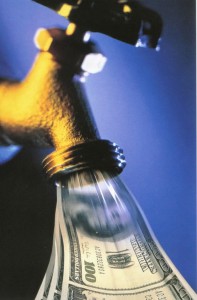In the past few articles, we’ve been focusing on your business budgets, how you can create your budgets and the key elements you will need to generate the budgets you need that give you a clear roadmap for your business.
 We left off last time with your operational budget so now it’s time to plan for and create your cash flow budget. Your cash flow budget, or forecast, is a centerpiece in your company’s financial processes and vital to both your short- and long-term success. Your business cash flow budget will insure that you will have the necessary financial resources to meet your company’s financial growth requirements.
We left off last time with your operational budget so now it’s time to plan for and create your cash flow budget. Your cash flow budget, or forecast, is a centerpiece in your company’s financial processes and vital to both your short- and long-term success. Your business cash flow budget will insure that you will have the necessary financial resources to meet your company’s financial growth requirements.
Once you have your cash flow budget in place, you’ll have a financial “crystal ball” of sorts so you can forecast your cash flow requirements, know your expectations moving forward and determine with reasonable certainty whether you’re meeting those expectations effectively.
How to Create a Cash Flow Forecast For Your Small Business
The good news is that if you gathered all your financial information as we discussed in the previous article, you’re already set to create a cash flow forecast for your small business.
Remember, the operative word in cash flow is “cash.” Your cash flow budget should include cash in and cash out…period. No need for amortization or depreciation here. Your cash flow budget is literally (and only) the in’s and out’s of cash movement in your business.
If your business is already established, you should already have the necessary information for creating a cash flow budget at your fingertips, because you have already experienced cash moving in and out of your business. A lot of the income and expenses will be similar from month-to-month and from year-to-year.
Creating Small Business Cashflow For Your Business
So, let’s get started with this simple 5-step process for creating your cash flow budget and forecast:
1. Project your collections…what do you expect to bring in as revenue to your business? Take into account your terms of collection. For example, if you have standard terms of net 15 but your client are more typically paying invoices in 30 days or more, then you will need to take that into consideration when projecting your collections. In other words, you may be in a situation where your July invoice is actually September revenue.
2. Add in the amount you expect to collect from your accounts receivable, taking into account any variances in your “net” terms versus actual collection cycles from your clients or customers, discussed in #1, above.
3. What other cash are you expecting to bring into your business? Are you anticipating new deposits for client projects or purchases? What about proceeds from partnerships, sales of property or other equity-based transactions?
4. Detail your expenses and other cash outlays. This is most easily done by taking a look at your expenses from the previous period (month, quarter, year). Are they fixed expenses or variable? Make adjustment to your previous outlays, if necessary. To get you started, it may be simpler to start with your standard expenses first, such as rent, payroll, insurance, loan payments, travel and entertainment, utilities, etc. Once you review your records and get in the flow of thinking about your cash outlays, you can make smarter decisions on variable expenses such as purchasing new equipment or hiring a marketing consultant.
5. Take a look at your accounts payable from the previous period (again, month, quarter, year). What are the due dates? When will you pay those expenses?
Once you’ve put together these five steps, you have a clear view of your cash flow and you’re well on the path to having an accurate cash flow forecast that helps you sleep well at night, knowing that you are in the driver’s seat for your company’s financial path.
If your business is relatively new and you’ve never created a cash flow budget before, keep in mind that it may take a few months to start getting consistent numbers that you can use to create your cash flow budget. But something is better than nothing and the sooner you start, the better you’ll be able to track your company’s financials, and therefore, your company’s success.
In the beginning, consider reviewing your cash flow projections at the end of each month – perhaps even weekly if your company is relatively new. Compare how your forecast meets with your actual cash flow and make any necessary adjustments, adding any new invoices, receivables and unanticipated or overlooked expenses that showed up during the month.
Once you feel comfortable with your numbers, considering sharing your cash flow forecast and your other company goals with key members of your team who can help support you in meeting your objectives. Assign budget responsibilities for certain line items to your management team where appropriate.
It’s the beginning of a new year and there’s no better time to take a close look at your financial systems, make the necessary adjustments and plan for your company’s future. Your cash flow forecast and other budget-related reports are a great place to start!

